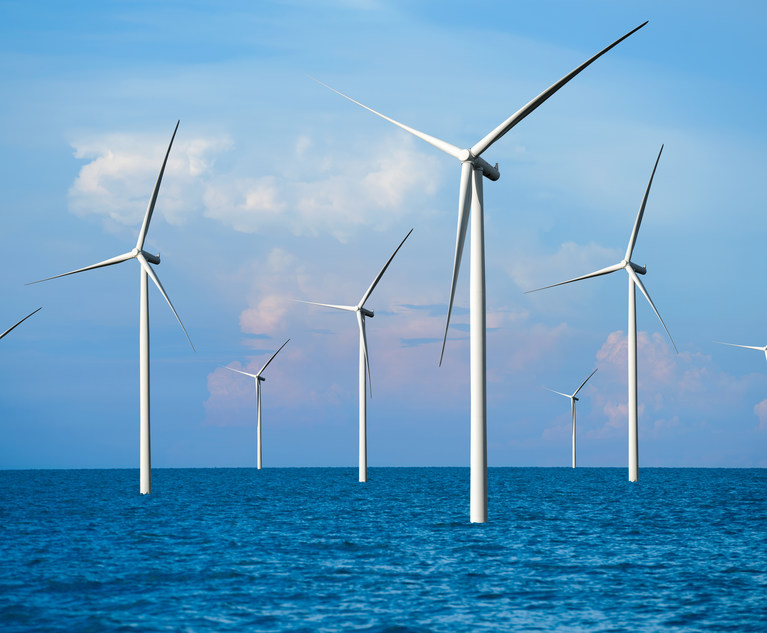Australian lawyers busy with renewable energy projects

[ad_1]
Australian lawyers with plans, mergers and acquisitions and financial practices have focused on helping investors establish or purchase green energy projects, battery arrays and electric vehicle charging infrastructure, as the renewable energy sector continues to grow.
“Australia’s energy system is in transition and it’s going one way, it can’t go back,†said Kate Axup, head of the energy sector at Australian company Allens. “We’re seeing a lot of activity in this industry in terms of buying and selling early stage projects or, in fact, developing projects themselves. “
Earlier this year, Allens advised Spanish renewable energy developer ACCIONA on the MacIntyre wind farm development project in Queensland, designed to power around 700,000 homes.
“There is probably more capital right now than projects and investments can absorb. “
In addition to working on the development or acquisition of wind and solar farms, lawyers also provide regulatory advice, particularly on the transmission network. Australia’s energy grid is ill-equipped to deliver renewable energy to its cities, and wind and solar projects require complex approvals to connect to the highly regulated grid.
Allens has a renewable energy group which is part of the company’s energy sector group. But it attracts lawyers with expertise in a specific practice area from across the firm and across the country.
“If we were to advise a client on the development of a wind farm, we would have real estate and environmental specialists, construction specialists and banking specialists. This whole team would be the team that often carries out renewable projects together, â€said Axup.
Ashurst organizes his renewable energy team in the same way. The UK headquartered company has practice groups and, below, an industry focus.
Renewable energy is part of the larger energy practice because it can be difficult to separate the two, said Paul Curnow, the company’s global co-head of energy. “If you think about the energy transition, it’s as much about how old forms of energy and these business models are adjusting,†Curnow said.
Even when lawyers are drawn from across the firm, a certain level of technical industry knowledge is required to advise on the development of a wind or solar or battery farm or on the acquisition of a battery. ‘a park.
Australia has seen a slew of wind and solar developments over the past decade, but Curnow said in recent years projects have stalled in the approvals needed to connect to the congested power grid.
Ashurst has also worked on large battery storage projects in recent years and increasingly on early stage hydrogen projects. The government has identified hydrogen produced from renewable energies such as wind and solar as a major potential export market of the future.
Curnow says much of the work is driven by the desire of many investors to withdraw capital from investments that do not meet their ESG (environmental, social and governance) criteria, such as polluters or companies with poor human rights record, and redeploy them. towards more ESG investments, including renewable energies.
“There is probably more capital right now than projects and investments can absorb, and that translates to a very big increase in work for me in all of these areas,†he said.
Law firms have handled a wide range of work related to renewable energy.
Ashurst advised the financiers of the 180 MW Dulacca wind farm project in Queensland and in March advised New Zealand energy company Tilt Renewables on its NZ $ 2.96 billion acquisition (NZ $ 2.1 billion). billion) by the consortium of investors PowAR and power producer Mercury NZ.
Australian company Gilbert + Tobin advised PowAR.
“There has certainly been an increase in renewable energy deals,” said Christopher Marchesi, special advisor to Gilbert + Tobin’s energy and resources group in Perth.
“ESG considerations are certainly motivators, but investors are always drawn to quality assets and recent transactions are prime examples. “
The company also advised renewable energy owner and developer Infigen on an A $ 893 million takeover bid last year by Spain’s Iberdrola, which was ultimately successful.
Gilbert + Tobin has a multidisciplinary clean energy and decarbonisation team that includes specialists in energy and resources, infrastructure and projects, banking, competition, environment, consultancy to business, technology and regulation. “The multidisciplinary aspect is crucial given that virtually all industries are impacted by the energy transition,†said Marchesi.
Along with investor interest in renewables, DLA Piper is seeing increased interest in infrastructure for electric vehicles.
“There has been less work to date in the area of ​​electric vehicle charging, but we expect this to increase as the use of electric vehicles increases; early market players have already started to see the benefits of their foresight, â€said Chris Mitchell, M&A and Projects Partner.
Last month, DLA Piper advised BlackRock Real Assets on its investment in Australian electric vehicle charging company JOLT Charge, which includes a A $ 500 million deployment of 5,000 free charging stations.
The company also expects a resumption of green finance work such as green bonds, green loans and sustainability-related loans, particularly in agriculture, resources and manufacturing.
Mitchell’s colleague, energy and infrastructure partner Kate Muller, says the prospects for work on renewable energies and the energy transition are solid. “We’re at the very beginning of this curve, and we expect more pressure to build as the US and Europe begin to impose import restrictions and more ESG assessment and compliance. broad which will have ripple effects on the local industry, â€she said.
Kate Axup of Allens is also optimistic about the prospects for renewable energy in Australia and the work it will generate for lawyers.
“It’s huge,†she said. “If you look at the magnitude of the changes taking place in the industry across the country, it will generate all kinds of work for law firms.”
[ad_2]
